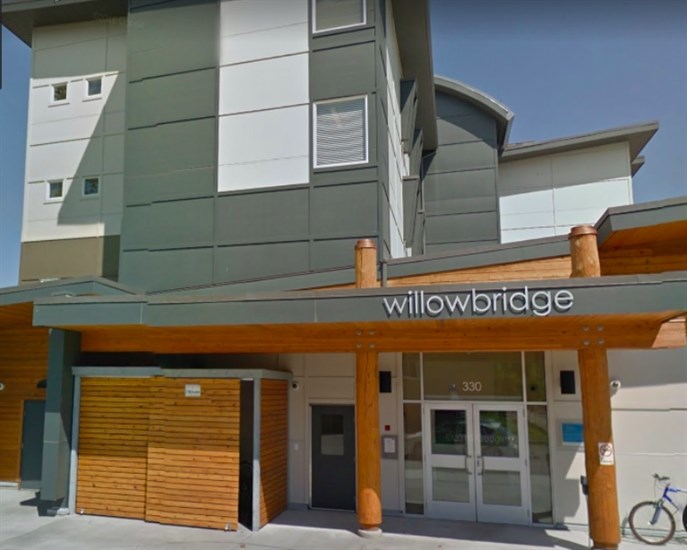
Property values around the Willowbridge supportive housing project almost doubled the city-wide increase five years after it opened.
Image Credit: Google Maps
November 12, 2019 - 7:00 AM
A recent B.C. Housing study shows a mostly positive impact on property values around subsidized and supportive housing projects.
In fact, one of the 13 projects studied, Willowbridge in Kelowna, saw its neighbourhood almost double in value five years after it opened compared to the city as a whole.
“Global and local economic factors are the main drivers of residential real estate trends, rather than the introduction of non-market housing to the area,” the report states.
Willowbridge opened with 40 beds in 2010 and is run by the Canadian Mental Health Association, which also runs Heath House, which opened last winter on Highway 97 and has been the subject of complaints about increased crime rates and drug use in that neighbourhood.
In both cases, residents are allowed to consume whatever substances they choose in their own rooms.
“For the most part, the only difference between Willowbridge and Heath House is that Willowbridge was purpose built and Heath House was a converted motel,” Mike Gawliuk, director of service delivery and program innovation for the mental health association, told iNFOnews.ca.
Property values within 200 metres of Willowbridge increased in value by 19 per cent during its first five years of operation (2010-15). Properties within 500 metres went up 21 per cent while the city’s average increase was 11 per cent.
That was back in a time when the province was dealing with growing problems with homelessness and drug addiction (but not the opioid crises of today), Gawliuk said.
“It’s a case of history repeating itself,” he said.
The province stepped in with a provincial homeless strategy that, in Kelowna, included Cardington, Willowbridge, New Gate and the Now Canada home on Tutt Street – with Cardington getting the majority of the negative publicity.
Today, about a decade later, those are all seen as good neighbours. In fact, a Willowbrook neighbour recently told Gawliuk – completely unsolicited - that the neighbourhood had actually improved since the facility opened.
There is no real difference in the backgrounds of people living in Willowbridge versus Heath House. Unlike Heath House, Willowbridge was not designed to have a supervised injection room because people weren’t dying from opioid overdoses to the extent they are today.
Kelowna has its Journey Home initiative to battle homelessness today. Back then it was called Four Pillars Kelowna, Gawliuk said.
At the other end of the spectrum is the only other Okanagan facility that was studied, Kickwillie Place, in Vernon.
It was one of only two locations where property values actually dropped. Properties within 200 metres saw values go down five per cent by 2014, five years after it opened. Values fell two per cent within 500 metres while the overall increase for the City of Vernon was one per cent.
Kickwillie is a 40-unit subsidized family housing project operated by the Vernon Native Housing Society, according to a 2009 news release from the B.C. government.
The study covered 13 buildings, including five each in the Lower Mainland and the Interior along with three on Vancouver Island.
Kickwillie is one of only two where property values near the building actually fell. The other was Baker Gardens in Cranbrook where values also fell by five per cent.
For most of the others, the property values were fairly close their city’s average, either up or down slightly.
Only the Marguerite Ford Apartments in Vancouver showed a similar change to Willowbridge with values going from a 47 per cent increase within 200 metres versus a 62 per cent increase citywide.
The report can be seen here.
To contact a reporter for this story, email Rob Munro or call 250-808-0143 or email the editor. You can also submit photos, videos or news tips to the newsroom and be entered to win a monthly prize draw.
We welcome your comments and opinions on our stories but play nice. We won't censor or delete comments unless they contain off-topic statements or links, unnecessary vulgarity, false facts, spam or obviously fake profiles. If you have any concerns about what you see in comments, email the editor in the link above.
News from © iNFOnews, 2019